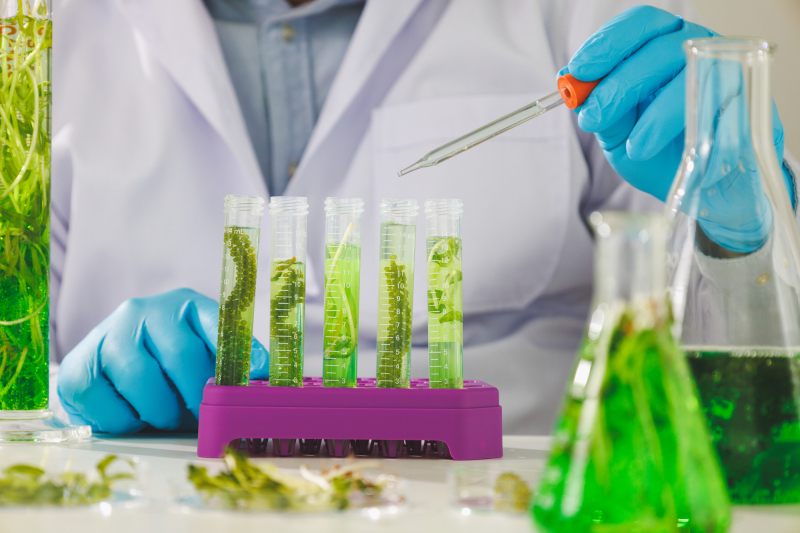It's well known that renewable energy sources, such as solar energy, are gradually replacing non-renewable energy sources, such as oil and gas. In recent years, there’s been a growing interest in biofuel energy. Why did it happen? What advantages does biofuel have in comparison with traditional fuels or even other types of green energy?
In truth, the issue with conventional energy sources is not their depletion – this has long been thrown into question. For instance, it is proven that there are plenty of oil and gas reserves in the world and around 1,000 years of proven coal reserves.
The main concern with the widespread utilization of fossil fuels is the environment and public health, as well as the overall quality of life. The use of conventional energy sources has adverse consequences, including the emission of greenhouse gases, leading to the global warming effect and climate change. It is these negative consequences that stimulated researchers to study renewable energy sources – solar, geothermal, wind, and water energy, as well as biofuels.
I think that in the future we will move away from fossil fuels and towards full electrification of transportation; however, this transition will not be a quick one. For now, we will need alternatives for the common fuels such as diesel and petrol. Our current solar and wind energy technologies are not fit for use in engines powered by petroleum-driven fuels, so we need to use natural analogs of conventional fossil fuels – bioethanol and biodiesel.
That’s one of the advantages of biofuels over other renewable energy sources – in terms of mechanics, they can replace conventional fossil fuels, in some cases without the need for engine modifications.

Comparison of petrol and biofuel. Credit: motortion / photogenica.ru
In a recent article, you demonstrated that potato peels and seaweed can be made into biofuel. What materials in general are best suited to be used as biofuel? And how do scientists decide on that?
Any type of organic material can be converted into bioenergy. For example, wood waste, comprising lignocellulosic materials, can be converted into alcohol or biogas, while any source of oily material (fresh or processed vegetable oil and animal fat) can be converted into biodiesel. Not only potato peels and inedible seaweed can be used as a biofuel source, but also fruit waste, straw, wood waste, and more.
It's very important to note that we should avoid triggering a “fuel versus food” conflict, meaning that the material that can potentially be used to feed humans or animals should not be converted into biofuel. Otherwise, that would lead to increased prices of food and feed commodities and contribute to food insecurity. So, any type of biomass which is not edible is ideal for conversion into biofuels. However, we have to also consider their economic viability.

Meisam Tabatabaei. Photo courtesy of the subject
Are biofuels still in the lab study stage or are there any impressive examples of industrial use? Which industries use them more actively?
Many types of biofuels are already commercially used. Two of the most evident, but not the only examples are bioethanol and biodiesel. These biofuels can be used where there are diesel- and petrol-powered engines, for instance, to generate electricity and heat, in gardening and construction equipment, in ships and locomotives.
There are different generations of biofuels. Generations differ from each other in terms of the feedstock used to produce biofuels. For instance, the first generation includes ethanol produced from commercially available food resources. In Brazil, it’s made from sugarcane, and in the USA – from corn starch. The resulting ethanol is mixed with petrol in different proportions; the mixture is then used as transportation fuel. The label of the resulting product reflects the proportion of the two compounds; for instance, E15 means that the fuel contains 15% ethanol and 85% petrol.
For diesel engines and to replace diesel, biodiesel is an ideal alternative. Its first generation is also produced from accessible food resources, such as corn oil, rapeseed oil, or palm oil; and the label, too, reflects the proportion of its compounds: B20, B50, and even B100.
Second-generation biofuels are produced from waste feedstock such as lignocellulosic materials, waste products commonly available in agriculture and forestry. Sugarcane, corn, and wood waste can be converted into lignocellulosic ethanol or other bioalcohols such as biobutanol. However, their production is rather expensive, so they are not commercially available. On the contrary, the biodiesel produced from waste vegetable oils and waste animal fat sources is economically viable and is, hence, commercially available worldwide.
Finally, third-generation biofuels originate from the carbohydrates or oil produced by microbes and microalgae. However, such oils, for instance, are rich in omega-3 fatty acids, and so are more viable for use in food or pharmaceuticals, rather than for conversion into biofuel.

Biofuel made from corn starch. Credit: primagefactory / photogenica.ru
This year, you will be joining the BIOCON international biotechnologies conference in Almetyevsk, which is organized by ITMO’s Advanced Engineering School. Why did you decide to participate in it? What are you planning to talk about?
I believe that scientific knowledge should be exchanged and shared. I believe that at the end of the day, every resident of the Earth is on a ship together and we either sail or sink together. That’s why scientists should cooperate and solve global challenges together. For me, BIOCON is one such opportunity to deliver a talk and share my expertise so that we can reach our common goal of contributing to a more prosperous future.
At the conference, I will talk about the activities of my research group in the field of biomass, biofuels, and biorefineries. We’ve been studying these for over 15 years now and humbly speaking, we have done our best to contribute to the advancement of the field. In particular, my talk will be about the importance of transdisciplinary research programs in the areas of biomass, biofuels, biorefineries, food security, and sustainability.

Tatneft headquarters in Almetyevsk. Credit: biocon.international
What are the main trends and prospects for biofuel energy in the coming years? What are the main challenges scientists will have to solve?
In order to lower emissions from the burning of fossil fuels, electrification of the transportation sector is important. This is an ongoing process, and during this transition, biofuels will play a crucial part in the coming decades. The full transition will have to take several stages.
First, countries around the world should develop policies for transitioning to renewable energy sources, with detailed descriptions of the steps to be taken. Next, they will need to research resources that can be converted to biofuels and the technologies they would need, which would not be necessarily the same for different countries. Once you know which resources and technologies you’ll be focusing on, you need to thoroughly calculate the ecological benefits of the devised plan.
It’s hard to predict to what extent biofuels could substitute their fossil-oriented counterparts or when the transportation sector would become fully electrified, but we are actively moving in this direction.
BIOCON is an international biotechnology conference to be held on December 18-20 in Almetyevsk, Republic of Tatarstan, Russia. The event is organized by ITMO’s Advanced Engineering School with support from Tatneft; it will be hosted by Petroleum High School. Over three days, 250 Russian and international scientists will discuss trends and challenges in sustainable agriculture, bioenergy, food production and security, microbial and nanotechnology, genetic and cell engineering, and bioinformatics.





